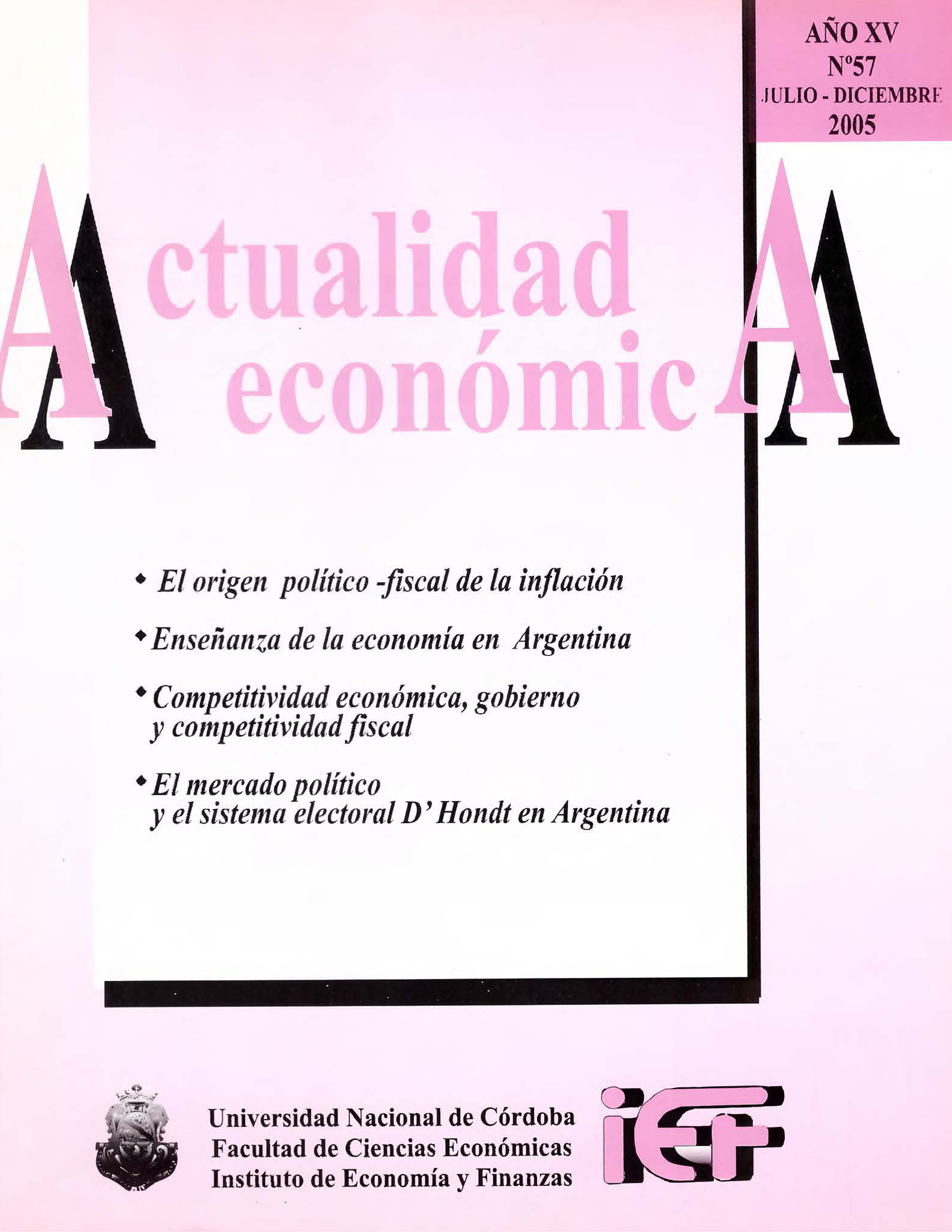Economic competitiveness, government and fiscal competitiveness
Keywords:
Economic Competitiveness, Economic development, Fiscal CompetitivenessAbstract
For a long time at the conceptual and academic level it has been accepted as a value that the performance of the countries is the result of a series of factors that involve a wide variety of variables. His position in the world, in short, is a consequence of such interaction. A particular space, has been occupied by the notion of competitiveness. In this sense, since competitiveness made its appearance as a concept, its importance has not been limited exclusively to the theoretical sphere but has been incorporated as a relevant topic in the empirical field and in the agenda of the daily debate and the practice of public policies.
This paper presents a restatement of the discussion of the very concept of "competitiveness" and the ways in which it is feasible to denote it in an effective way. We refer essentially to what we have to understand by competitiveness, and the components or factors that motivate it. In what follows we will try to discuss the different dimensions of the concept "competitiveness", on the one hand, and on some border concepts that link it with the role of governments, from where we will arrive at an expanded border for speculation around that and other Approaches that point to the improvement in the performance of nations.
Downloads
References
Argandoña, Antonio (1997). “Visión General”, en Instituto de Estudios Económicos. Factores productivos y competitividad en España“, Madrid.
Asensio, Miguel Angel (2003). “Federalismo e Instituciones Fiscales. Marco General y Lecturas para Argentina”, en Documentos y Aportes en Administración Pública y Gestión Estatal, Nº 4, Santa Fe, Argentina, p. 95.
Barre, Raymond (1967). “Desarrollo Económico”, Fondo de Cultura Económica, México.
CEPAL-Universidad de Quilmes (1998). “Estrategias empresariales en tiempos de cambio”, Buenos Aires.
Esser, K. y otros (1996). Systemic Competitiveness. New Governance Pattern for Industrial Development, London,Frank Cass.
Garelli, Stephane (1998). “¿Qué es la competitividad?”, en IMD, obra citada.
Haldenwang, Christian von (2005). “Gobernanza sistémica y desarrollo en América Latina”, en Revista de la CEPAL, Santiago de Chile, Abril.
Instituto de Estudios Economicos (1997). “Factores productivos y competitividad en España”, Madrid.
International Management Development (IMD). “World Competitiveness Yearbook”, Años 1996, 1997,1998 y 2003, Lausana, Suiza.
Kopits, George y Symansky, Steven (1998). Fiscal Policy Rules, IMF Ocassional Paper Nº 162, Washington.
Kosacoff, Bernardo y RAMOS, Adrián (1998). “Consideraciones económicas sobre la política industrial”, en CEPAL-Universidad de Quilmes. “Estrategias empresariales en tiempos de cambio”, Buenos Aires, 1998.
Lewis, Arthur (1981). “Teoría del Desarrollo Económico”, Fondo de Cultura Económica, México, 1981.
North, Douglass (1987). “Historia Económica e Instituciones”, Editorial Alianza Universidad, Madrid.
Pampillon Olmedo, Rafael e Izquierdo Llanes, Gregorio (1997). “La competitividad de la economía española. retos y soluciones”, en Instituto de Estudios Económicos, obra citada, p. 51.
Parejo Gamir, J. A.. y Gutiérrez, J.P. (1997). “Teorías del crecimiento económico y productividad de los factores”, en Instituto de Estudios Económicos, obra citada, p. 19.
Porter, Michael (1991). “La ventaja competitiva de las naciones”, Editorial Javier Vergara, Buenos Aires.
Rubalcaba, Luis (1998). “Competitividad y políticas de competitividad”, Mimeo, Universidad de Alcalá, Alcalá de Henares.
Tanzi, Vito (2005). “El papel del Estado y la calidad del sector público”, en Revista de la CEPAL, Santiago de Chile, Abril.
UNION EUROPEA (Comisión Europea) (1998). Revista “European Economy”, Informe de la Comisión Europea, Edición Especial.
Williamson, Oliver (1985). Las instituciones económicas del capitalismo, FCE, México.
World Economic Forum (1994). “World Competitiveness Report 1994”, Davos, Suiza.
Downloads
Published
Issue
Section
License

This work is licensed under a Creative Commons Attribution-NonCommercial-NoDerivatives 4.0 International License.
Those authors who have published with this journal, accept the following terms:
Authors will conserve their copyright and guarantee the magazine the right of first publication of their work, which will be simultaneously subject to the Creative Commons Attribution-NonCommercial-NoDerivative 4.0 International License that allows third parties to share the work as long as the author and first publication of this magazine are indicated.
Authors may adopt other non-exclusive license agreements to distribute the published version of the work (e.g., deposit it in an institutional telematic archive or publish it in a monographic volume) provided that the initial publication in this journal is indicated.
Authors are allowed and encouraged to disseminate their work through the Internet (e.g., in institutional telematic archives or on their website) before and during the submission process, which may lead to interesting exchanges and increase citations of the published work. (See The effect of open access)









